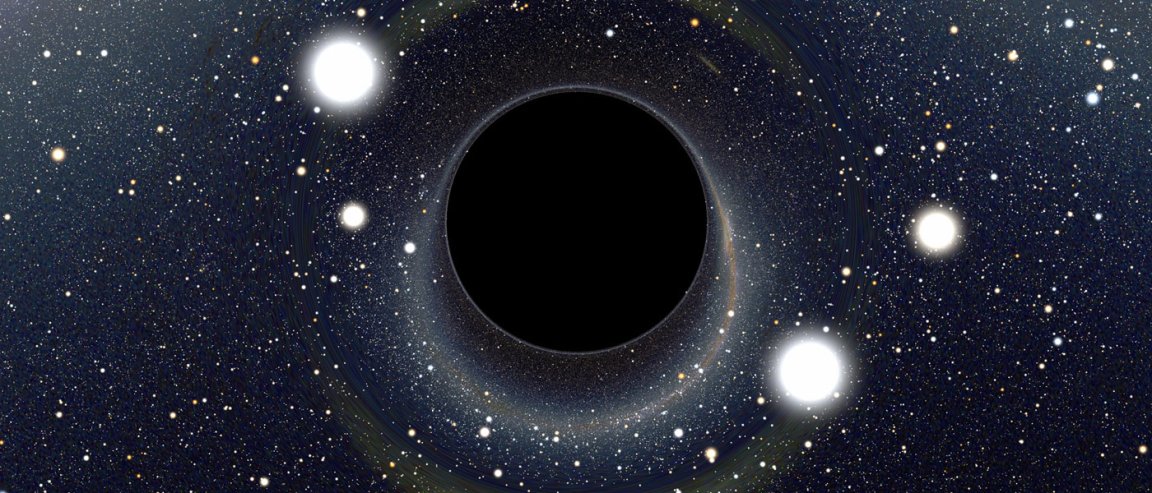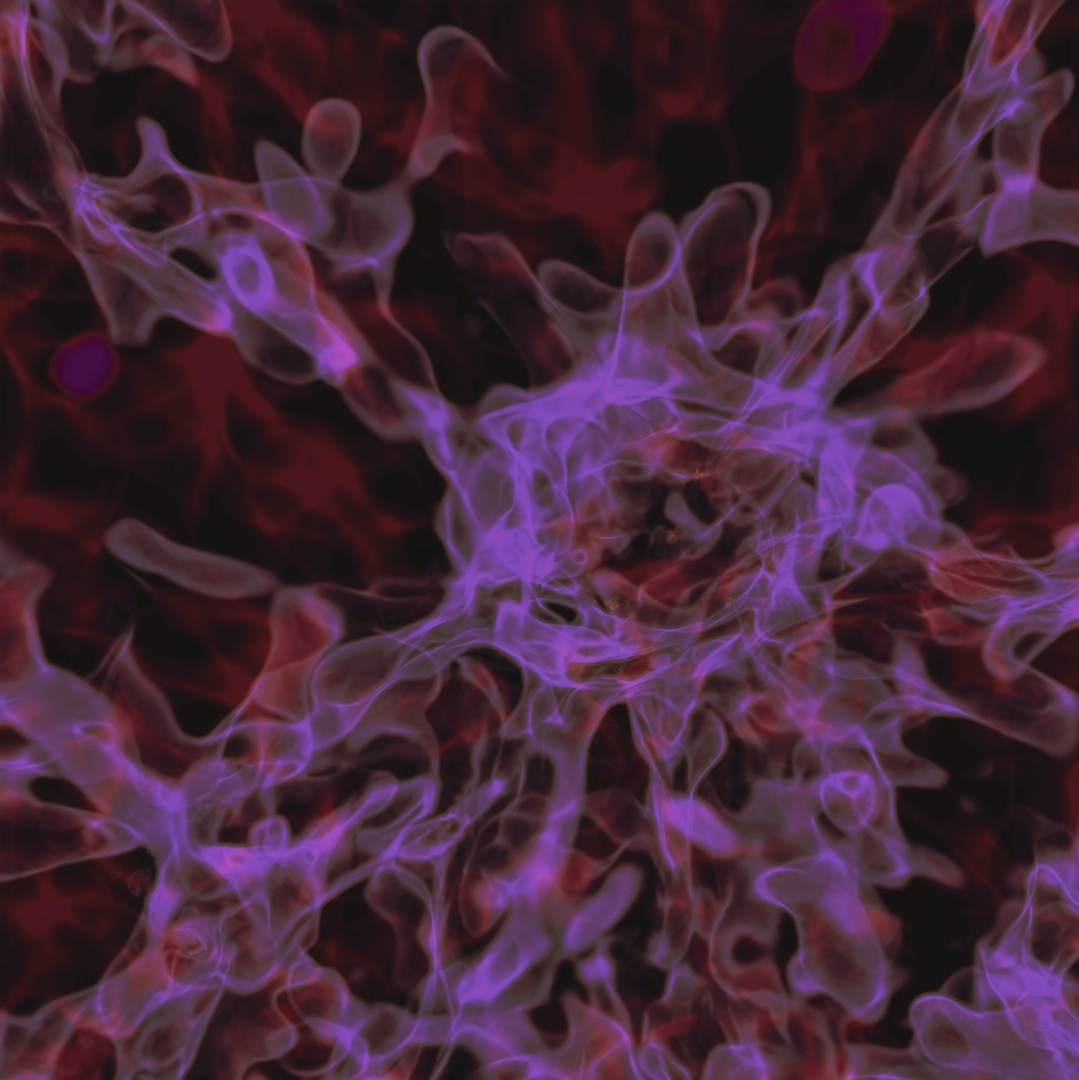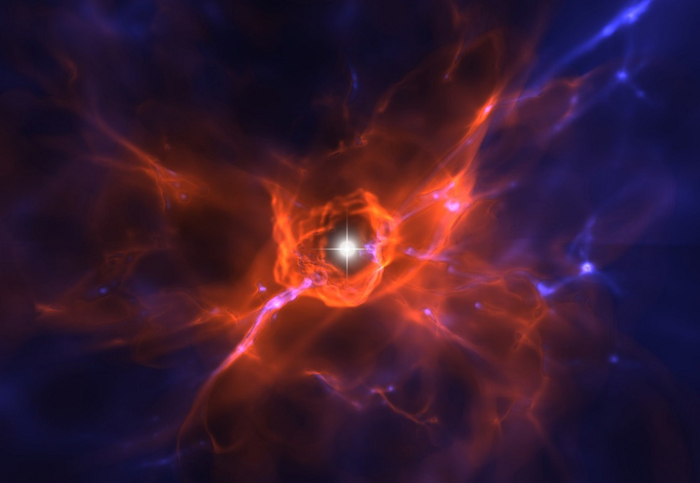
Death by Overeating
In 2003, Avi Loeb, chair of the astronomy department at Harvard University and Volker Bromm of the University of Texas at Austin (UT Austin) theorized the existence of black holes that result from a process referred to as “direct collapse.”
In this process, an environment that is so hot, such as the early universe, would promote the growth of a single massive star instead of forming several clumps of thousands of smaller stars. And because heavier elements were not as spread out in the early universe, stars made up of almost purely helium and hydrogen lack the elements that would have helped cool them down.
Stars born under these circumstances quickly consume all the gas and dust around them, growing around 1 million times bigger than normal stars, but ultimately driving themselves to an early grave.

When such a star dies, it may implode and form a black hole which may start out medium-sized but would eventually grow into supermassive black holes from constant feeding.
“The special aspect of this (direct-collapse) process is that it leads to the formation of a very massive ‘seed’ black hole in one go,” Loeb says. “It is difficult to make such a giant black hole over such a short time if they start from low-mass seeds.”
Possible Evidence of this Theory Just Came Up
Astronomers observed a strange signal coming from a galaxy known as CR7 last year. This galaxy is one of the most luminous objects in the early universe and its temperature is assumed to be over 180,000 degrees Fahrenheit. Despite evidence of helium ionization detected from the galaxy, there were no signs of other elements, such as heavier elements.
It is not certain, however, whether the irregularities were caused by a direct-collapse black hole, or first-generation stars.
“That makes the galaxy that we have discovered really unique, and ticks all the boxes for predictions for both first-generation stars, or a direct-collapse black hole,” says David Sobral, an astrophysicist at the University of Lisbon in Portugal.

“Regardless, the actual material—pristine gas, to make either first-generation stars or a direct collapse black hole is essentially the same, and it is extremely exciting to finally start asking actual physical questions about the nature of the very early galaxies,” Sobral said. “This goes way beyond the traditional approach of simply counting distant galaxies.”
More observations will be conducted to confirm what it is exactly that is causing the strange signals from CR7. NASA’s Hubble Space Telescope and the Atacama Large Millimeter/submillimeter Array (ALMA) are up to the task, as well as other research teams using computer simulations.